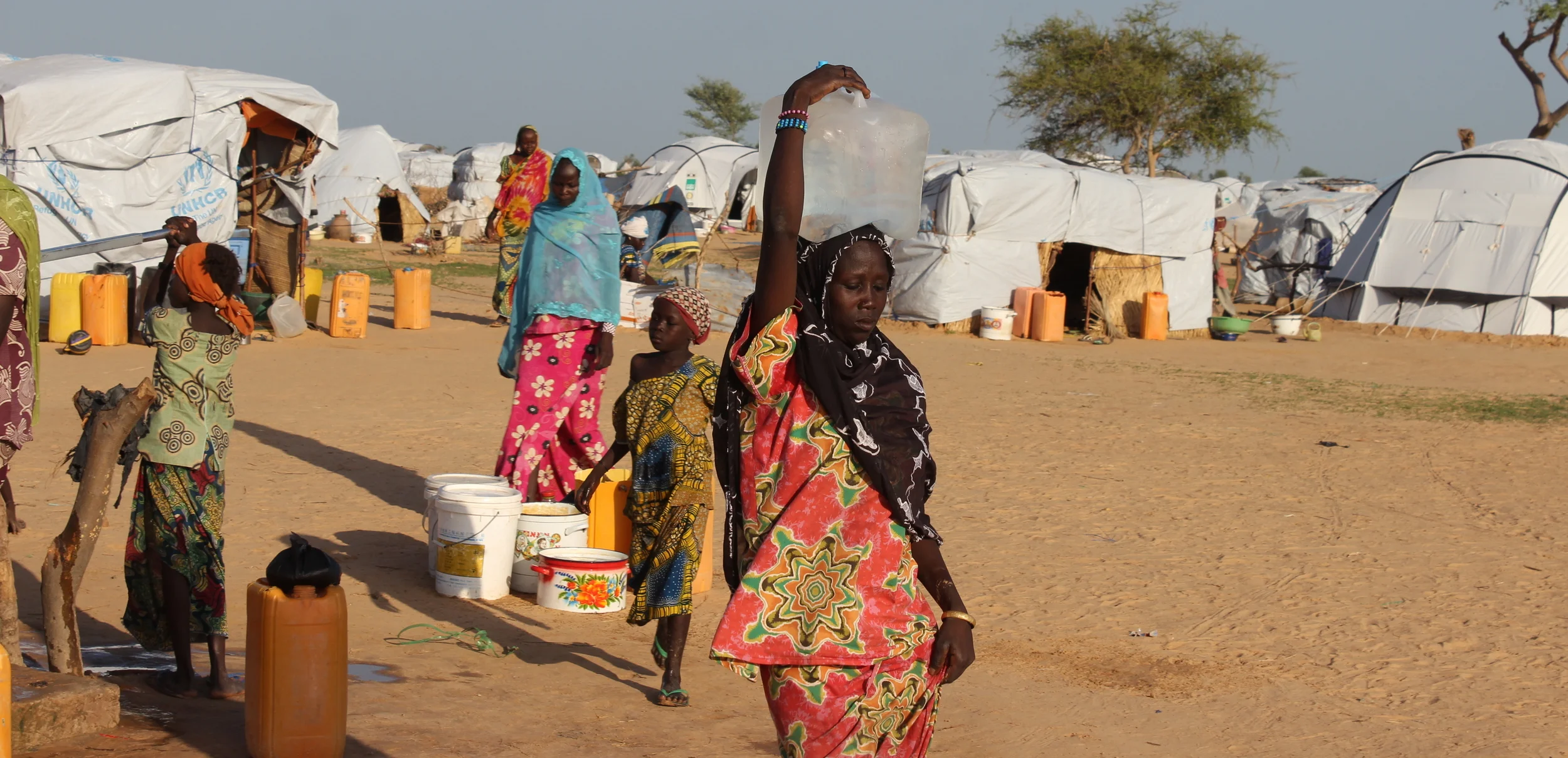The Boko Haram insurgency has claimed more than 25,000 lives in the past six years.
Since 2014, it has escalated and splintered across a wider swathe of West and Central Africa, uprooting millions of people in the process. Where should they go? This special feature examines the options and explores what the future holds.
The Boko Haram conflict has displaced more than 2.5 million people in the Lake Chad Basin region since May 2013 – around four times the number of migrants and refugees that have arrived in Europe so far this year. The vast majority, an estimated 90 percent, end up not in camps but hustling out an existence in urban centres in Nigeria that are still in the conflict zone and already very poor.
Click on the image below to read about how people are surviving in the city.
More features
Howa Umar is one of hundreds of women and children rescued from Boko Haram.
Relocated to a defence academy in the Nigerian city of Kaduna, the pain is still raw as she relives how she had to pretend to be crazy by rolling around in the dirt so she wasn’t married off to a Boko Haram fighter. As the tide begins to turn against the Islamist militants, pressure is building on those displaced by the violence to return to their communities. But emotionally as well as physically, women like Umar, are still far from home.
Millions of Nigerians have fled Boko Haram, but the violence follows them.
Scores of people have been killed in the last few weeks in a string of suicide bombings in the main northeastern cities where they seek refuge. Border areas where refugees flee in Cameroon, Chad, and Niger are increasingly under attack. So pervasive is the insurgency, it is even starting to strike the displacement camps where the most desperate seek help.
Cover photo by Boureima Balima/IRIN




